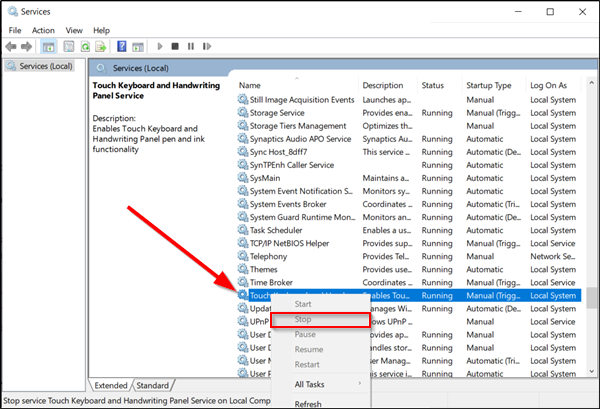Windows ecosystem was one of the earliest platforms to have embraced touch support. With the release of the Modern interface, an increasing number of Windows devices, including Microsoft Surface Pro/Book, convertible laptops and tablets, started adapting to this environment readily. However, soon, a nasty finding in the above hosts (tablets, convertibles, and some laptops) raised a red flag. It was reported that Windows contains a file called WaitList.dat that contains exposed text from email, contacts, and written documents when processed using handwriting recognition.
The finding disclosed an unpleasant side effect associated with indexing. So, what’s the controversy around this unknown WaitList.dat file? Where is its location, and how to delete it? We answer your questions here.
WaitList.dat file in Windows 11/10
WaitList.dat is a data file which has been found to contain stripped text from email, contact and document files as a function of the Windows Search Indexer. The file that is created is part of the Input Personalization system that adapts the language model and dictionary to a particular user, based on the user’s usage.
The primary role of WaitList.dat file is to store text to help Windows improve its handwriting recognition feature. As such, when the feature is turned on, a registry key gets activated to enable the text harvester functionality, which generates WaitList.dat. After that, the WaitList.dat file commences into action and gathers data from all text-based files residing in a computer, such as emails or Office documents, and indexes it. This mode of action could knowingly or unknowingly lead to the secret hoarding of your passwords and emails.
Currently, there is no known malware or threats that target this file but with the finding now made public, it’s just a matter of time until something really wild shows up.
The WaitList.dat file can be found as a part of the Input Personalization system that adapts the writing gestures to a formatted text for the user, based on the user’s usage. It can be found located in the following directory on Windows systems.
C:\Users\<username>\AppData\Local\Microsoft\InputPersonalization\TextHarvester\WaitList.dat
While renaming the file is not expected to cause issues, it is better to disable the personalized Handwriting Recognition Service instead.
Read: What is a DAT file? How to open a DAT file?
Disable Personalised Handwriting Recognition
If you want to disable handwriting recognition, you can do so by doing the following,
Search on Windows for ‘Services’ and then go to ‘Touch Keyboard and Handwriting Panel Service’.

Then, right-click on it. If it’s enabled, you should see a ‘Stop’ option on the menu. Click it to stop the process. On the other hand, if you see the Start option, it means the capability is already disabled.
An app that can extract and analyze the text harvested in this WaitList.dat file is also available on Github.
I hope this helps!
Looking to learn more about other processes, files, file types or formats in Windows? Check these links:
Windows.edb files | Thumbs.db files | DLL and OCX files | NFO and DIZ files | Swapfile.sys, Hiberfil.sys & Pagefile.sys | Index.dat file | Desktop.ini file | Svchost.exe | WinSxS | RuntimeBroker.exe | StorDiag.exe | nvxdsync.exe | Shellexperiencehost.exe | Hosts file | Desktop.ini file.
Leave a Reply